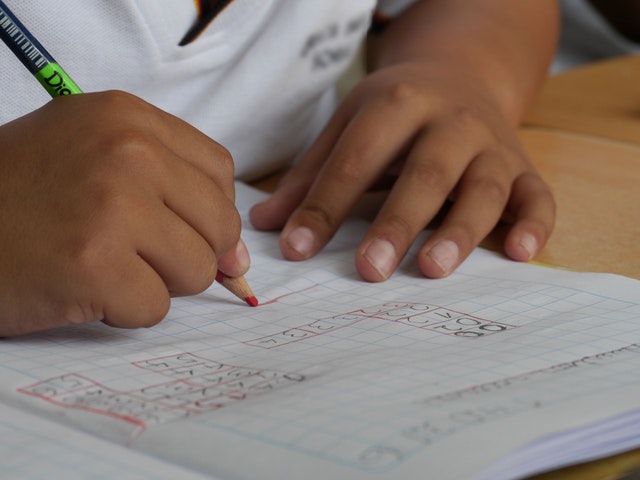8
There are many feelings that are invoked when people hear the word “assessment”. Many will jump to the standardized tests that our children are required to take. For others, the only form of assessment they are familiar with, or feel are appropriate are tests. Before we talk about various forms of assessment, let’s look at why we use assessments in the classroom.
Assessments are used for a variety of purposes:
- Monitor students’ progress in learning
- Make instructional decisions
- Evaluate student achievement
- Evaluate and make program and learning decisions
It’s important to understand why we should assess our students, and it doesn’t have to do with school funding or “good” standings in the state. It has to do with supporting students and the learning process.
We want to assess children’s knowledge in order to discover where their strengths lie, as well as where they need more support. The next piece, and a very important part of assessment, is to then take that knowledge and make a plan for further learning. It may mean that a student needs to be challenged more in an area, or needs additional time working on that particular skill. We then make those plans for the student. Here is another area where Differentiated Instruction comes into play. We may have various students working on different activities based on the assessment results.

For some, the only form of assessment that seems appropriate is a test. This, however, is not the only form of assessment. Tests are one of the least effective ways to assess learning. Real life activities, projects, and other classroom activities can be used for assessment. Remember the Fact Sheets in the Jigsaw example, or the RAFT example mentioned in the previous chapter? Both of these could be used to assess the students’ learning on these topics. You will probably also get a more accurate picture of their learning than from a test of any kind. Consider looking at forms of assessment that are not tests.
We know our students will be required to take standardized tests to measure learning. In Michigan, our students take the M-Step test. “All of Michigan’s state assessments measure student progress with Michigan’s content standards or other career- or college-readiness goals. The Michigan Student Test of Educational Progress (M-STEP) is given online to students in grades 3-8 and measures current student knowledge of Michigan’s high academic standards in English language arts (ELA), mathematics, science, and social studies.
High school students in grades 9 and 10 take the PSAT, to inform schools, students, and parents on what students know in ELA and mathematics, and help prepare students for the SAT college entrance exam given to every high school junior as part of the Michigan Merit Examination (MME). The MME consists of a free SAT with essay that also measures student knowledge on state ELA and mathematics standards, M-STEP science and social studies components, and a work skills assessment called ACT WorkKeys.” (All of Michigan’s state assessments measure student progress with Michigan’s content standards or other career- or college-readiness goals. The Michigan Student Test of Educational Progress (M-STEP) is given online to students in grades 3-8 and measures current student knowledge of Michigan’s high academic standards in English language arts (ELA), mathematics, science, and social studies.
In some areas of the country, high stakes tests are given. “High Stakes Tests” are tests that have a significant impact on the student. For example, some states require students to take a test at the end of each grade and they cannot move to the next unless they pass it. The new reading law in Michigan is an example of a High Stakes Test.
As our purpose for assessment is to help students learn, a vital part of this is feedback. Students need timely, and specific feedback on the work they perform. When they take a test, they need to receive it back quickly and have comments made so students know where they went “wrong”. We can let them know where they can find the correct information and have them look up the right answers for additional points. Other assignments should have information as to what was done well, as well as where improvements can be made. This is how students learn from their mistakes, and it is an essential part of the learning process.
As I said earlier, feedback needs to be given in a timely manner. Returning work to students two, three, weeks after it was performed serves little purpose to students. They have lost interest in the assignment and are no longer vested; they have moved on. Try to return work within a couple days, while students are still interested in what they did. They are more likely then to go back and look up information, or re-do assignments.
Consider letting students re-do assignments when appropriate. If a student has not performed as you think they are able to, or with some additional information they may be able to learn more, give them the opportunity to do so. Not every assignment will lend itself to this sort of thing, but students can often gain more information and increase learning when they have the chance to see their mistakes, and go back and re-do an assignment. This is also a practice that will help to develop a Growth mindset.
Assessment is a necessary part of the learning process. Be sure you are using the appropriate types of assessments for your students and think beyond the traditional tests. Look at the performance of your students and use that information to plan future learning experiences for your students. Keep an open mind, be willing to try new ideas, and be willing to give students input into their assessment as well. Provide timely feedback on their work so they can further their learning. The effectiveness of assessment is based on how it is implemented by the teacher.
